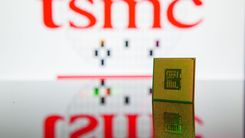Wednesday Sep 27 2023 14:03

6 min

The Japanese yen topped the 149 yen per dollar (USD/JPY) mark on Tuesday, reaching its lowest point in eleven months and descending further into levels that may trigger government intervention.
The decline in the currency's value has been substantial this year, primarily due to the Bank of Japan's commitment to maintaining an extremely loose monetary policy, even as other major central banks — such as the U.S. Federal Reserve and the European Central Bank — have pursued aggressive tightening measures. During its September meeting, the Bank of Japan (BoJ) disappointed hopes of signaling an end to its negative interest rate policy by maintaining a dovish stance.
The yen's ongoing weakness has led Japan's finance ministry to increase warnings regarding the possibility of currency intervention in recent weeks.
Simultaneously, data has revealed that the country's headline inflation rate moderated to 3.2% in August from 3.3% in July, although the core inflation rate has remained above the BoJ's 2% target for the seventeenth consecutive month.
In an overview on Wednesday, Markets.com Chief Market Analyst Neil Wilson wrote that the BoJ may soon change its monetary policy stance, given the yen’s decline:
“BoJ meeting minutes showed division over how soon they could end negative interest rates as ‘a few members pointed out that the pace of increase in services prices had been somewhat high’ and ‘members concurred that inflation expectations had shown some upward movements again’. Curve ball coming. USDJPY back above 149 – some verbal intervention from the likes of PM Kishida not enough to hold back the tide with USD steamrolling everything in its path right now.”
Calculate your hypothetical required margin for a Forex position, if you had opened it now..
Category

Instrument


Bid
Ask
Account Type
Direction
Quantity
Amount must be equal or higher than
Amount should be less than
Amount should be a multiple of the minimum lots increment
USD
EUR
GBP
CAD
AUD
CHF
ZAR
MXN
JPY
Leverage
Required Margin
Required Margin
Current conversion price:
Past performance is not a reliable indicator of future results.
In a comment cited by FXStreet, analysts at MUFG Bank echoed similar sentiments to Wilson, adding that intervention was likely above the 150 mark:
“We continue to see a high chance of intervention but only after a break above the 150 level when there is a higher chance of stops fueling volatility and ‘disorderly’ price action that would provide the justification for the MoF to intervene.
The authorities in China have also upped their rhetoric opposing CNY weakness as well. Actions to curtail upside moves in USD/CNY would certainly help Tokyo in its battle to limit JPY weakness.
We see the risks still skewed to the upside for both USD/JPY and USD/CNY given the US Dollar momentum but opposition to currency weakness in Tokyo and Beijing remains firm.”
In their forecast for the Japanese yen, analysts at Melbourne-headquartered ANZ Bank echoed their colleagues at MUFG, saying that the BoJ could step in to influence currency markets if the dollar to yen rate breached 150:
“While energy prices may be on a rebound, we think BoJ intervention is a more credible threat at the 150 mark and beyond.
We see the USD/JPY returning to 145 by year-end and 132 by September 2024, as the US tightening cycle is likely to be over by then.”
Analysts at Societe Generale were more muted, agreeing that dollar strength may provoke BoJ intervention:
“The decline in EUR/USD and USD/JPY volatility after the passing of Fed and BoJ rate decisions last week suggest the current FX theme of Dollar strength may have further to run into Q4 and may provoke further jawboning by Japanese currency officials and the MoF.”
In their latest FX Snapshot on September 25, analysts at Citibank Hong Kong were fairly optimistic in their USD to yen forecast:
“Citi Analysts think USDJPY is stuck between a bullish and bearish impulse. On the bullish side, US cut pricing unwinding amid ongoing cyclical data momentum should support US yields and by extension USDJPY. On the bearish side, hawkish BoJ pushback and risk of MoF intervention may keep USDJPY upside capped. Longer term, they see UST yields retracing below 4% by the end of the year, suggesting USDJPY may move closer to 130, assuming the Fed is finished hiking.”
Citi’s 3-month USD to yen forecast saw the pair averaging 148.00. The bank’s 6-to-12-month forecast saw renewed strength for JPY, suggesting that a potential unwinding of the Fed’s monetary policy may send the USDJPY rate to an average of 130.00.
The bank's long-term USDJPY projection was identical to its 6-12 month forecast, as it saw the pair maintain at the 130.00 level going forward.
When considering foreign currency (forex) for trading and price predictions, remember that trading CFDs involves a significant degree of risk and could result in capital loss.
Past performance is not indicative of any future results. This information is provided for informative purposes only and should not be construed to be investment advice.
Asset List
View Full ListLatest
View all
Wednesday, 16 April 2025

5 min

Wednesday, 16 April 2025

5 min

Tuesday, 15 April 2025

6 min


